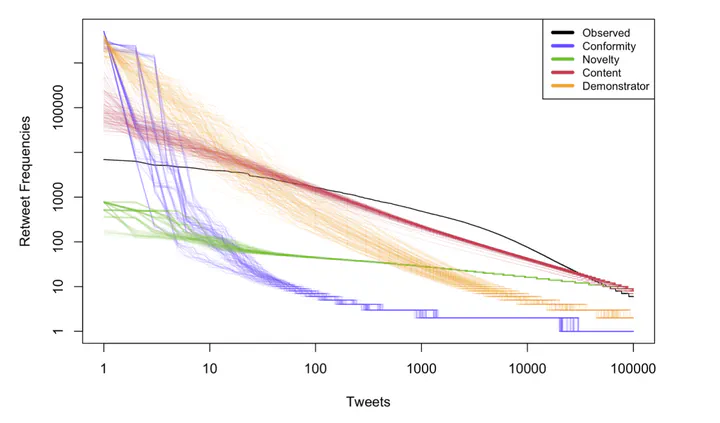Negativity bias in the spread of voter fraud conspiracy theory tweets during the 2020 US election
Sep 14, 2023·,,, ·
0 min read
·
0 min read
Mason Youngblood
Joseph Stubbersfield
Olivier Morin
Ryan Glassman
Alberto Acerbi

Abstract
During the 2020 US presidential election, conspiracy theories about large-scale voter fraud were widely circulated on social media platforms. Given their scale, persistence, and impact, it is critically important to understand the mechanisms that caused these theories to spread. The aim of this preregistered study was to investigate whether retweet frequencies among proponents of voter fraud conspiracy theories on Twitter during the 2020 US election are consistent with frequency bias and/or content bias. To do this, we conducted generative inference using an agent-based model of cultural transmission on Twitter and the VoterFraud2020 dataset. The results show that the observed retweet distribution is consistent with a strong content bias causing users to preferentially retweet tweets with negative emotional valence. Frequency information appears to be largely irrelevant to future retweet count. Follower count strongly predicts retweet count in a simpler linear model but does not appear to drive the overall retweet distribution after temporal dynamics are accounted for. Future studies could apply our methodology in a comparative framework to assess whether content bias for emotional valence in conspiracy theory messages differs from other forms of information on social media.
Type
Publication
Youngblood, M., Stubbersfield, J., Morin, O., Glassman, R., Acerbi, A. (2023), Negativity bias in the spread of voter fraud conspiracy theory tweets during the 2020 US election, Humanities and Social Sciences Communications, 10, 573